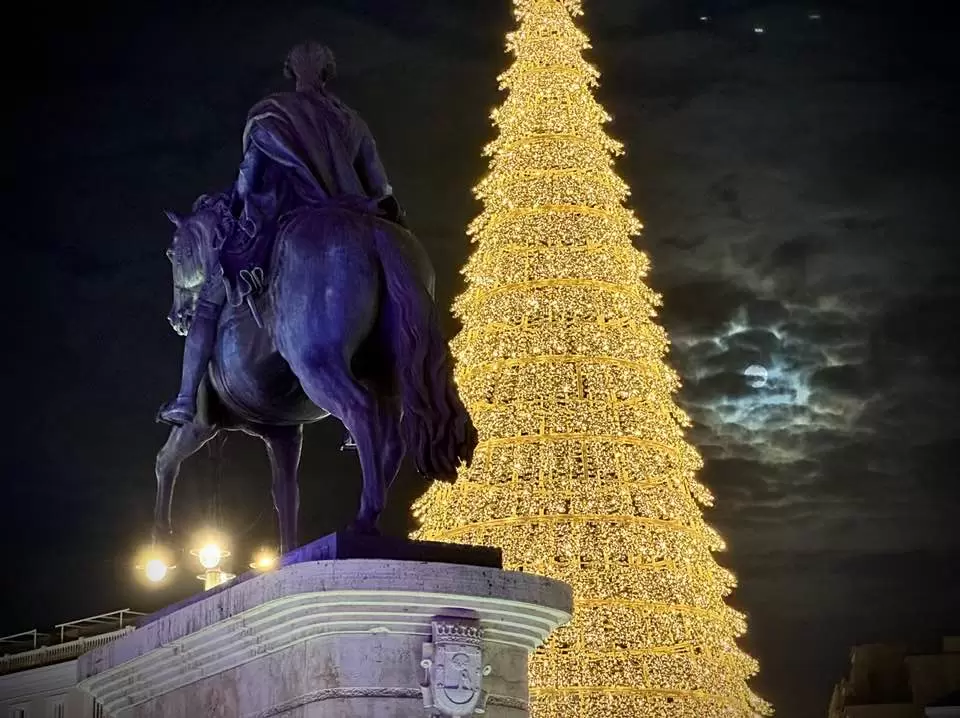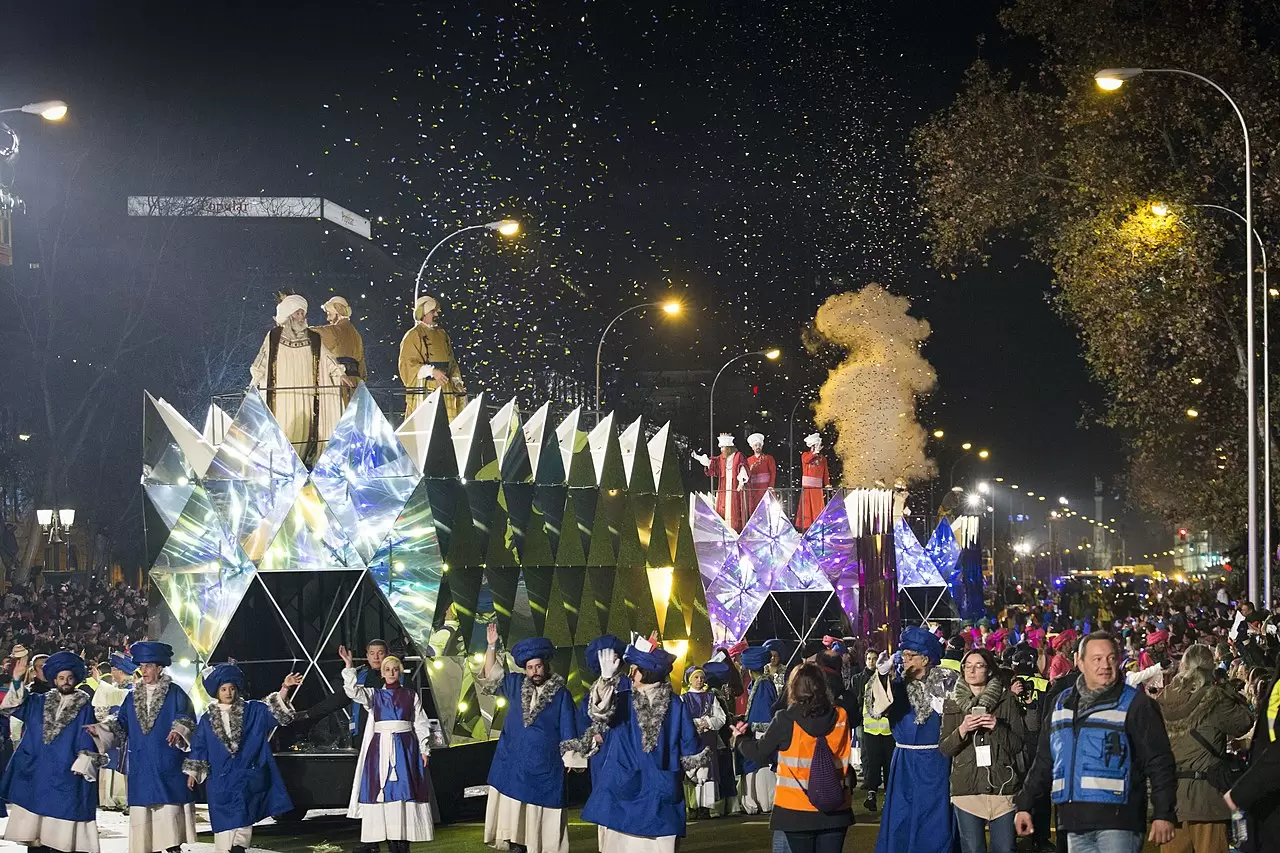Traditionally, Spanish holiday traditions were much different than those found in other parts of Europe. Although Spaniards are adopting some traditions from other Christian countries, they still celebrate in a unique way.

Christmas
Historically, Christmas was not widely celebrated in Spain. There was no Santa Claus/Father Christmas and children did not receive presents. Rather, Christmas was a religious holiday celebrated with the family.
The Christmas Lottery
Spanish holiday traditions get into full swing on December 22, with the Christmas Lottery. It was established in 1812 and is the second longest continuously running lottery in the world; it continued to run even during the Spanish Civil War. It is very popular because of the relatively high chance of winning a prize. On the morning of December 22, school children sing out the winning numbers. This is broadcast on national TV and kicks off the holiday season.
Nochebuena
Nochebuena, which translates to the good night, is how Spaniards refer to Christmas Eve. On the evening of December 24, Spaniards gather with their families to enjoy a large meal. Unlike in Italy, where everyone in the country eats fish, what Spaniards eat varies by region. For example, in Galicia they eat fish, in Castile and León suckling pig is the dish of choice while Catalans feast on galets, which is a meaty broth containing large pasta shells (galets). Since so many Madrileños are from elsewhere in Spain, Christmas Eve dishes are more varied; Madrileños often eat food typical of the small village from which they originated.
After the meal Spaniards go to Midnight Mass, which is called Misa de Gallo. This means Rooster’s Mass. It is called this because a rooster supposedly crowed the night Christ was born.
Beléns
Belén is the Spanish word for nativity set. Nativity sets have their origins in the Middle Ages, when Saint Francis of Assisi decided to make a reproduction of Christ’s birth and conduct a mass around it. Every home in Spain has one; they are more important than Christmas trees. In fact, Christmas trees are a very modern addition to Spanish holiday traditions. Typically, one does not just go out and buy a belén. Rather, they start with a basic one and then add to it each year.
Beléns can be very elaborate, including things like castles, water features (there is even one in Málaga that is underwater), windmills, musicians or Roman Centurions. Some in the south are even based in Cairo (apparently this became fashionable after Napoleon conquered Egypt). The biggest, and most elaborate, beléns can be found in cathedrals.
Are you interested in relocating to Madrid? If so, we invite you to read our post: 5 Fabulous reasons for relocating to Madrid
Los Reyes
Los Reyes (Los Reyes Magos) is traditionally the most important holiday celebration in Spain. It falls on Epiphany, January 6, which celebrates when The Three Kings came to visit the newborn Jesus. Few Christians outside of Spain know the name of The Three Kings, but every child in Spain knows the names Melchior, Caspar and Balthazar. That’s because they are the ones that bring the presents. They may not bring gold, frankincense and myrrh, but they bring candy and toys.
People that celebrate Mardi Gras will find many features of this holiday familiar. There are kings, ring shaped cakes with items baked inside and parades where people throw candy and other small items from the tops of floats.
Parades
In 1885, the Spanish government called for a parade to mark this very special Spanish holiday. Since then, the parades have grown in scale and spectacle. Now, there are parades in every Spanish city. The Kings arrive on either floats, or camels, and are surrounded by dancers, musicians, puppeteers and other entertainers. Children and their parents line the streets to catch a glimpse of the Kings and enjoy the festivities. The Kings throw candy which the kids all scramble to catch. Adults even get in on the fun; it’s not uncommon to see adults with open, upturned umbrellas trying to catch as many sweets as possible.

Gifts
On the eve of January 6, children in Spain lay out their shoes for the Kings to fill with presents overnight. Many also leave grass or hay for the camels. Children that have been good during the year wake up to see their shoes filled with gifts; the bad kids get coal.
Many families do celebrate Christmas now, and give their kids a couple presents on December 25. However, Los Reyes Magos are far more popular than Papa Noel, as Santa Claus is referred to. The Spanish toy makers association AEFJ conducted a survey and found that 68% preferred receiving gifts from the Kings, as opposed to the 27% that preferred gifts from Papa Noel.
Rascón
No January 6 in Spain would be complete without a Rascón, or two or three. A rascón is a crown shaped cake that is covered with candied fruit, little pieces of sugar (or powdered sugar) and slivered almonds. Sometimes they come filled with cream; most Spaniards have a clear preference as to whether they like them plain or filled with cream. Rascóns are time consuming to bake at home (Spaniards are not traditionally bakers), so they purchase them at bakeries. All day on January 5 (and before) you will see people carrying large boxes through the street, filled with their rascóns. These special cakes are either consumed after the Los Reyes parade on the evening of January 5, on the morning of January 6 or even in the afternoon of the 6th, as a snack. Traditional roscóns have two items baked inside: a bean and a little figurine (usually a king but some bakeries get creative). Whomever gets the piece with the figurine inside is king or queen for the day; often the cake comes with a little paper crown, like those in Christmas crackers, for the finder to wear. The person that gets the bean has to bake the cake for everyone next year. Rascóns from more modern bakeries don’t contain the bean, for obvious reasons.
Do you want to experience these Spanish holiday traditions? Madrid Estate offers complete property services, so we can help you rent or purchase your dream property in Madrid. Arrange a FREE CONSULTATION TODAY to learn how we can help you get your property search started.
New Years Eve
New Years Eve in Spain is called Noche Vieja (the old night). It is more of a family affair than New Years Eve in the US or the UK. People do go out to bars or clubs, but only after they celebrate with their families. People not familiar with this are often shocked to walk around Madrid on New Year’s Eve at 9pm and find everything closed.
Grapes
This is one of the most distinctive Spanish holiday traditions: to eat 12 grapes when the clock strikes midnight. The number 12 comes from the fact that there are 12 months in the year. Eating them all means that you will have good luck for the year to come. Here is the catch: you have to eat them in rapid succession. On New Year’s Eve, people all across Spain turn on the television to watch the clock in Puerta del Sol, in Madrid (you can see it in the photo below; it’s on the left). At 11:59 pm, everyone takes their little cup on grapes in hand. When the clock chimes, they eat their first grape. With each chime they have to eat another grape. All must be consumed when the clock finishes chiming. This is much harder than it sounds!